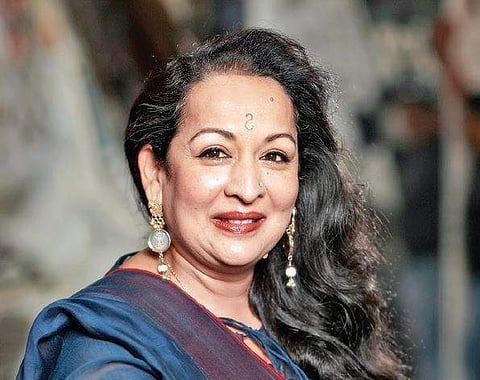

Hollywood film The Warrior Queen of Jhansi that recently released in India has been directed by Bharatanatyam dancer, choreographer, educator, producer, and promoter of the arts Swati Bhise. New York-based Bhise says the process of the film’s making was fairly tedious.
Shooting in the damp and cold of England, Morocco’s freezing temperatures and Rajasthan’s heat and dust, were probably the least of the film’s challenges. As the first ever Hollywood action film with a South Asian woman in a lead role—played by Bhise’s daughter Devika—it was difficult to find supporters to fund this ambitious project.
While over the years, Swati meticulously researched the subject—through British and Indian journals and Marathi regional travelogues—an added hurdle was to make the story relevant to an international audience. In a short span of 98 minutes, Bhise chose to highlight Rani Lakshmibai’s struggle as a woman who in 1858 India managed to achieve what most women in America today are still struggling with. “She led the first war of independence and left an impression in history,” says Bhise.
But she is quick to add that the film is not just a patriotic story about India. “It’s a story that should inspire women globally,” she says.Several people in the west unfamiliar with British and Indian history questioned whether the Rani of Jhansi actually existed or was some kind of myth. “It’s easy to dismiss her as she is an uncomfortable truth. That was the whole purpose why I decided to made this film—to bring her story to a global platform and hope that people understand what a real Wonder Woman was,” explains Bhise.
She also had a number of people in America believe that hers is a Bollywood film. “That’s the only thing they know. Also, it’s possibly because they’ve never seen so many brown people in a Hollywood or western movie before. Even if there is a movie about World War I or World War II in which thousands of Indian soldiers participated, they depict not a single brown face in any of those armies,” she elucidates. She questions why Hollywood has so far no Indian-based characters as leads, just as it has African-American ones or those from other communities. “Why are Indian characters in Hollywood generally quirky, funny and not very positive? That’s the burning question,” Swati asks.
Moreover, she also points out why most stories that come out of India on a global platform highlight mostly negative aspects such as the country’s slums, rape and poverty. “I have not seen something celebrating our culture, heritage or positivity,” she says. The reason for it, she believes, is that people in the west like seeing such stories about Asia, because it makes them feel superior. “Even in newspapers here like the New York Times, I only read negative stories about India,” she adds.
Bhise explains that the East India Company, a corporation of merchants who came in when the Mughals were in power and stayed in India for 200 years, portrayed to the world that they were good for India—they educated us and built our railroads. But they failed to tell how much they stole or took from India, or destroyed the country’s economy. “The GDP before the British came to India was 27 percent and when they left India, it was 3 percent,” she says. According to her, America is facing the same problem that India was in 1858—whether it is pharmaceuticals that are doing the damage or tobacco companies in this day and age.